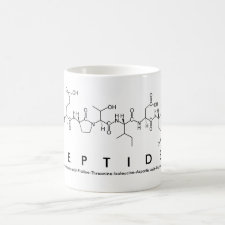
Authors: Wang P, Hu WM, Su WK
Article Title: Molecularly imprinted poly (methacrylamide-co-methacrylic acid) composite membranes for recognition of curcumin.
Publication date: 2008
Journal: Analytica Chimica Acta
Volume: 615
Issue: (1)
Page numbers: 54-62.
DOI: 10.1016/j.aca.2008.03.040
Alternative URL: http://www.sciencedirect.com/science/article/B6TF4-4S575X8-4/1/cd16857466dc2d9bf8b4b2360bddcbfb
Abstract: In this study, molecularly imprinted poly (methacrylamide-co-methacrylic acid) composite membranes with different ratio of methacrylamide (MAM) versus methacrylic acid (MAA) were prepared via UV initiated photo-copolymerization on the commercial filter paper. Curcumin was chosen as the template molecule. Infra-red (IR) spectroscopy was used to study the binding mechanism between the imprinted sites and the templates. The morphology of the resultant membranes was visualized by scanning electron microscopy (SEM). Static equilibrium binding and recognition properties of the imprinted composite membranes to curcumin (cur-I) and its analogues demethoxycurcumin (cur-II) or bisdemethoxycurcumin (cur-III) were tested. The results showed that curcumin-imprinted membranes had the best recognition ability to curcumin compared to its analogues. From the results, the biggest selectivity factor of αcur-I/cur-II and αcur-I/cur-III were 1.50 and 5.94, and they were obtained from the composite membranes in which MAM/MAA were 1:4 and 0:1, respectively. The results of this study implied that the molecularly imprinted composite membranes could be used as separation membranes for curcumin enrichment
Author keywords: molecular imprinting, Photo-copolymerization, composite membrane, selective separation, Curcumins



Join the Society for Molecular Imprinting

New items RSS feed
Sign-up for e-mail updates:
Choose between receiving an occasional newsletter or more frequent e-mail alerts.
Click here to go to the sign-up page.
Is your name elemental or peptidic? Enter your name and find out by clicking either of the buttons below!
Other products you may like:
 MIPdatabase
MIPdatabase









